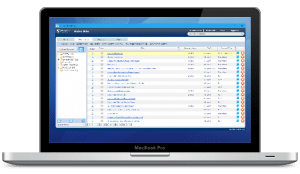Keeping HIPAA Compliance Efforts Up-To-Date

The legislation and implementation of the Health Information Technology for Economic and Clinical Health Act (HITECH) expanded the scope of the Health Insurance Portability and Accountability Act (HIPAA) to reach more organizations. The legislation made it necessary to decipher the HIPAA compliance requirements regardless of whether you’re a doctor, a software developer, or in any other profession.
Definition of HIPAA
The HIPAA legislation was adopted by the Congress in 1996 to safeguard health information as individuals switch companies. To strengthen the law, the US Department of Health and Human Services (HSS) enacted the Privacy Rule in 2003. The rule highlighted the Protected Health Information (PHI) as any health-related information handled by any covered. Such information requires protection to guarantee confidentiality and privacy of the patients.
In 2005, the Security Rule updated the HIPAA to incorporate PHI stored electronically. The update introduced three fresh requirements (two involving the IT department). They include the administrative safeguards involving policies and procedures, technical safeguards that ensure security when transmitting PHI electronically, and physical safeguards that involves the measures you initiate to control access to the data.
Who Should Comply with HIPAA?
HIPAA is designed for everyone who handles ePHI and PHI. This may include nurses, doctors, and other covered entities in the medical field. However, HITECH has spread its wings to business associates including people who handle the protected health information as part of their service provision.
For example, an audit firm dealing with private information must comply with HIPAA. If you operate a SaaS software used to manage the information, your company must comply with the regulations too. Every department that gets into contact with the information, regardless of how negligible the association may appear, should comply with the regulations.
Consequences of HIPAA Non-Compliance
The Office for Civil Rights is the body obliged to ensure that all parties comply with the Privacy and Security Rules. While the HSS updated the rule of enforcement between 1996 and 2009, the Health Information Technology for Economic and Clinical Health Act (HITECH) brought the rules together in the Omnibus Act. The strengthening of this Act makes it possible for violators to face civil penalties and possible jail terms.
The Necessity for Continuous Monitoring
Administrative safeguards require that you maintain a continuous assessment and analysis of your organization’s risks. The close monitoring ensures that you comply with HIPAA security rules with ease.
Risk Analysis and Management
It’s a requirement by the Security Rule’s Administrative Safeguards that you frequently perform risk analysis as part of your organization’s security management procedures. You need to identify the specific measures that are ideal for implementation in various covered entities. In your risk analysis, you should include the following activities:
- Risk evaluation – ensure that you assess the probability of risk occurrence as well as the potential effects that it would have on e-PHI
- Identification – Identify measures to protect your systems from the risks. You should have a clear implementation plan that’s not only feasible but also compatible with other systems.
- Documentation – you should record all the security measures that you’ve identified and highlight the rationale and benefits of implementing them in your organization.
- Continuity – The most crucial element of security measures is your ability to maintain continuity at a reasonable cost. Ensure that you always identify ways to guarantee sustainable protection of your systems.
Risk analysis is not a one-time event! You’re obliged to ensure that all your health records are closely monitored to prevent unauthorized access which would breach the confidentiality and privacy requirements in the healthcare sector. Malicious criminals will always devise new methods to attack you e-PHI which underscores the importance of a continuous and reliable security system.
The Importance of a Continuous Compliance Program in Risk Management
Risk analysis is highly dynamic and various controls are quickly becoming outdated. As such, it’s necessary that you continuously update your security systems to ensure that you minimize the possibility of attacks on your PHI.
Integrity Controls
All the entities that handle private health information are obliged to implement policies that will provide the much-needed security to e-PHI. The electronic storage of the data increases its vulnerability to attacks which further heightens the need to follow all the requirements in the Security Rules.
For example, if you realize that you’ve not updated a software in your system, there should be a mechanism to fix the problem instantly thus ensuring continuity in safety controls. In summary, you should have a system that identifies the problems and manages them immediately to seal the security loophole.
Integration of Continuous Audit into HIPAA Risk Management Program
A security-first approach dictates that you identify and resolve security problems as fast as you can. You need to maintain compliance with HIPAA by ensuring a continuous auditing system that will aid in the identification of the security loopholes in your system. Both your internal and external auditors should show documentation of all the processes undertaken to ensure compliance.
While this may be overwhelming, you’ll realize that you can utilize automated tools that offer makes it easy to access the required compliance documents that saving you time and resources. If you find the right compliance tools, you will have a more efficient security system that easily integrates the monitoring, identification, compliance, and auditing procedures.
How Technology Eases HIPAA Risk Management
Both the government and private IT gurus agree that the use of technology significantly simplifies the HIPAA compliance process. Some of the apps that have been developed allow you to streamline your workflow and identify looming risks to avert them before they impact the PHI. The automation reduces the time required for continuous monitoring without compromising the efficiency of your security systems.
Author Bio
Ken Lynch is an enterprise software startup veteran, who has always been fascinated about what drives workers to work and how to make work more engaging. He has propelled Reciprocity’s success with this mission-based goal of engaging employees with the governance, risk, and compliance goals of their company in order to create more socially minded corporate citizens. Learn more at ReciprocityLabs.com.















Leave a Reply